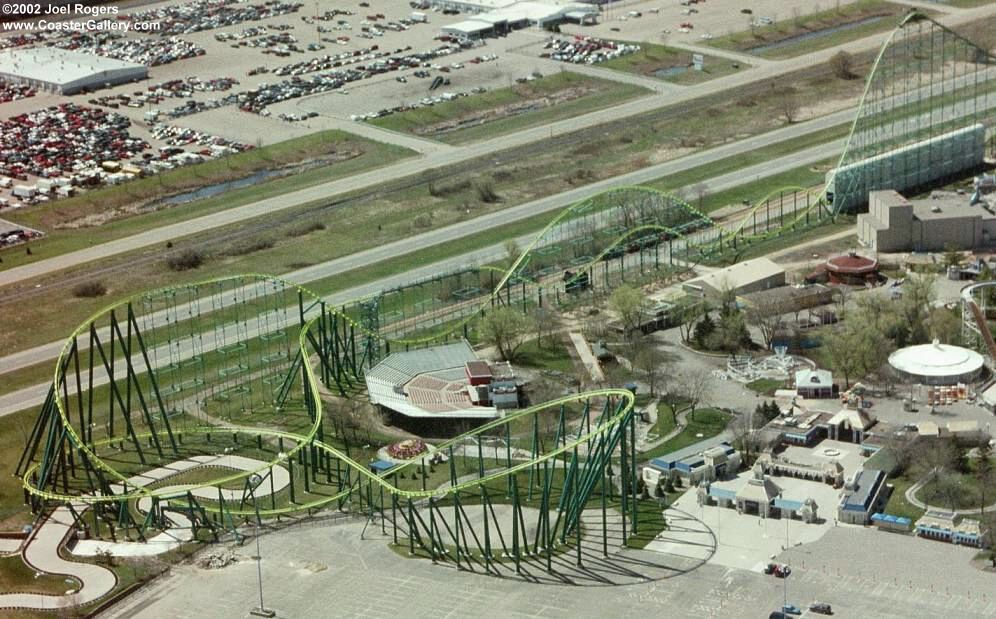|
The Original Hypercoaster Type
Arrow Dynamics and Cedar Point decided on an Out & Back Layout for the first ever hypercoaster, Magnum XL-200.
Out and back hypercoasters draw their thrill from the negative-g sensations felt going over the hills. Two types of airtimes are
experienced ejector and floater. Floater airtime is experienced while going over parabolic hills. This type of airtime is gentle and
means that zero g conditions exist. In contrast, ejector airtime is experienced toward the end of the ride during bunny hills.
When this happens your body is harshly pushed against the restraints, which means that negative g's are being produced.
Lateral g's are experienced on out & back hypercoasters too. Coaster designers include creative turnarounds to incorporate this
important factor to the intensity and excitement of the ride.
Out & back hypercoasters usually feature 2 - 4 major hills out to a turnaround, and then camelbacks on the return trip. All
out & back hypercoasters have lapbar restraint & some feature seatbelts. Out & back hypercoasters are built by Arrow Dynamics,
DH Morgan, Bollinger & Mabillard, and Intamin.
|
|
Variations On The Design
Variation on any type always occurs because hypercoasters are custom made (with the exception of Goliath and Titan). So this means that variation on the classic out & back design must exist.
The main cause for variation is park space. Because of this issue, the L-shaped out & back was born. The purpose of any L-shaped Hypercoaster is to conserve space and/or to produce more lateral g-forces. A L-shaped Out & Back is perfect for parks looking for an hypercoaster but lacking the space for a straight out & back. Because of the length of an average hypercoaster (over 5500 feet), many parks just don't have 2750 feet of horizontal space open.
Picture Of Wild Thing Courtesy of CoasterGallery.com
Similarities and Difference Between Companies
Comment? Email Me!
|
|


